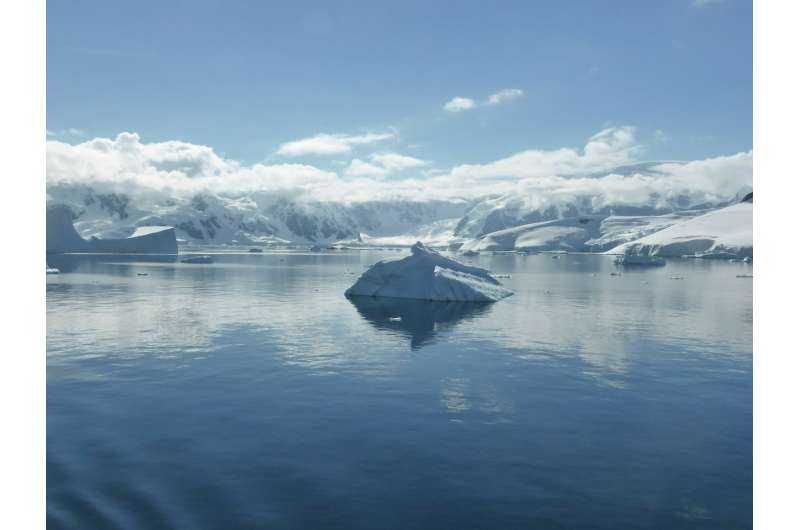May 30, 2018 report
Waves have variable impact on sea ice in the Southern Ocean, study finds

Over the last two decades, sea ice steadily increased in the Southern Ocean, but starting in 2016, researchers were astonished by a rapid decline. This unforeseen diminishing of sea ice highlights the inadequacy of existing models of sea ice extent and thickness. This is significant because the Southern Ocean plays a key role in regulating the global carbon cycle by regulating the uptake of carbon and heat by the ocean.
One variable for which current models do not account is the stress of ocean waves on sea ice. A collaborative of European oceanographic researchers has now published a study of the effects of ocean waves on Southern Ocean sea ice using data from the Sentinel 1 constellation. The results are published in the Proceedings of the National Academy of Sciences.
To date, Sentinel 1 consists of two satellites, Sentinel 1a and Sentinel 1b, both equipped with C-band synthetic aperture radar, which provides very high resolution imagery from which researchers can derive wave height information. The researchers tested wave height data from thousands of Sentinel images against a model of an ice edge along the y axis with an x axis pointing into the ice and a narrow wave spectrum propagating toward direction Φ relative to the x axis.
Wind generates waves over ice-free oceans, which propagate over large distances, eventually reaching ice-covered water. Propagating waves redistribute the momentum from the wind over large regions, and impart that energy to sea ice through collision. Modeling shows that the stress created by these collisions impacts the ice edge.
Of particular interest is the rate of wave decay, or attenuation. Dampened waves in sea ice indicate that energy has been imparted to the ice edge, providing a decent metric for estimating the effects of waves on sea ice extent and thickness. However, as is often the case in scientific exploration, the results are complicated.
Although the researchers conclude that wave stress is an important factor in sea ice evolution, particularly within a few hundred kilometers of the sea ice, such stresses are highly variable. They report that wave decay can happen much more quickly than previously believed, but attenuation is highly variable.
"Clearly, the strong year-round wave forcing in the Southern Ocean provides a significant force that should help maintain a compact ice edge," the authors write, adding that associated wave motions "likely also contribute to floe breakup and rafting, resulting in the rougher (and potentially thicker) sea ice observed by scatterometers near the ice edge."
The authors believe the dataset produced by their study could contribute to coupled wave-ice interaction models currently under development.
More information: Strong and highly variable push of ocean waves on Southern Ocean sea ice. PNAS. doi.org/10.1073/pnas.1802011115
Abstract
Sea ice in the Southern Ocean has expanded over most of the past 20 y, but the decline in sea ice since 2016 has taken experts by surprise. This recent evolution highlights the poor performance of numerical models for predicting extent and thickness, which is due to our poor understanding of ice dynamics. Ocean waves are known to play an important role in ice break-up and formation. In addition, as ocean waves decay, they cause a stress that pushes the ice in the direction of wave propagation. This wave stress could not previously be quantified due to insufficient observations at large scales. Sentinel-1 synthetic aperture radars (SARs) provide high-resolution imagery from which wave height is measured year round encompassing Antarctica since 2014. Our estimates give an average wave stress that is comparable to the average wind stress acting over 50 km of sea ice. We further reveal highly variable half-decay distances ranging from 400 m to 700 km, and wave stresses from 0.01 to 1 Pa. We expect that this variability is related to ice properties and possibly different floe sizes and ice thicknesses. A strong feedback of waves on sea ice, via break-up and rafting, may be the cause of highly variable sea-ice properties.
Journal information: Proceedings of the National Academy of Sciences
© 2018 Phys.org


















